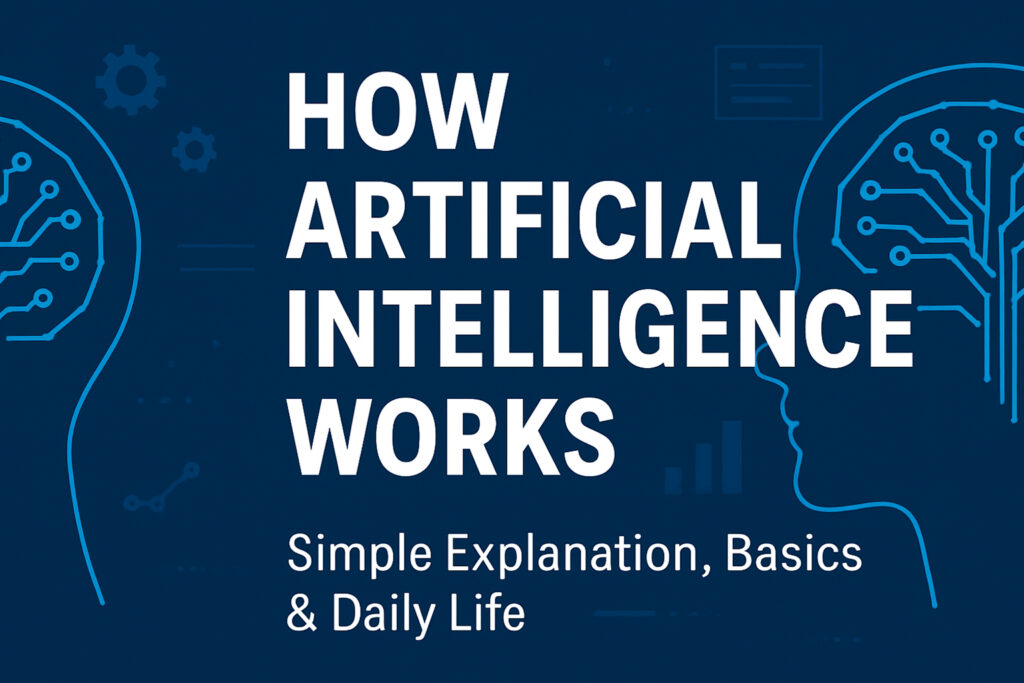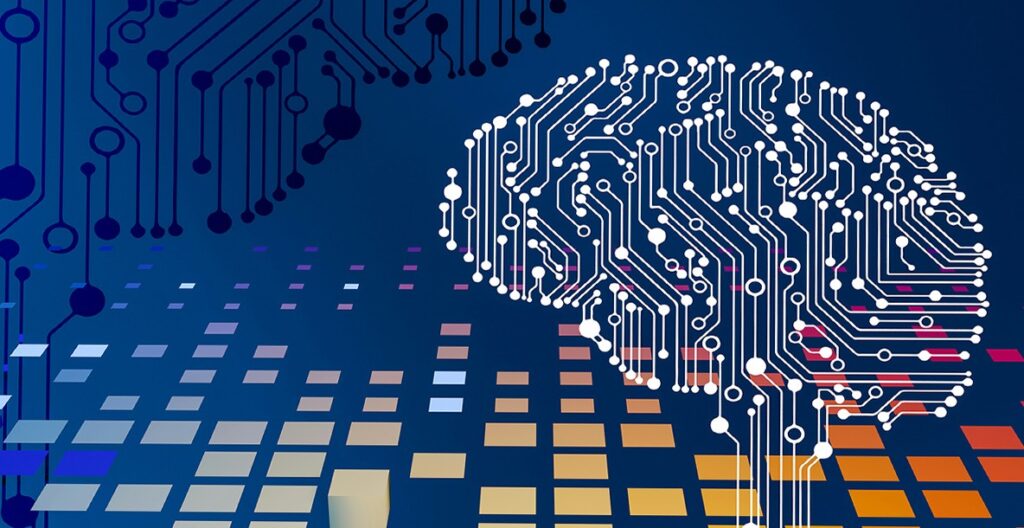
Introduction
In today’s digital world, Artificial Intelligence (AI) is everywhere around us. From the voice assistant on your phone, to social media recommendations, to Google Maps guiding you on the right path—AI is silently shaping our daily experiences. But the big question is: How does Artificial Intelligence work? What are the basics of AI, how exactly does AI process data, and where do we see AI in daily life? Let’s break it down in a simple way.
How Artificial Intelligence Works
At its core, AI works almost like the human brain. It collects data, learns from it, and then makes decisions or predictions.
- Data Collection – AI gathers massive amounts of information from different sources such as text, images, or voice.
- Processing & Learning – Using algorithms and models, AI identifies patterns and relationships within that data.
- Decision Making – Based on its learning, AI provides answers, recommendations, or actions.
For example, when you type a few words in Google search, AI predicts what you might be looking for by analyzing millions of past searches.
Simple Explanation of AI
To explain it in the simplest way: AI is a type of technology that can think, learn, and act like humans—but faster and more efficiently.
- Netflix suggests shows by analyzing your watch history.
- YouTube recommends videos based on what you already enjoy.
- Chatbots on websites answer your questions instantly.
So, AI is like a “smart assistant” that learns from data and makes life easier.
Basics of AI
To truly understand AI, you should know its basics:
- Machine Learning (ML): AI learns from data and improves over time without being directly programmed.
- Neural Networks: These mimic the human brain’s neurons to recognize complex patterns (like faces in photos).
- Natural Language Processing (NLP): AI understands and processes human language, like Siri or Google Translate.
- Computer Vision: AI interprets images and videos—used in facial recognition and medical scans.
These fundamentals are what make AI so powerful.
How AI Processes Data
AI doesn’t just “see” data—it understands and interprets it.
- Input: Data is collected (e.g., voice command, image, or text).
- Analysis: AI breaks the data into smaller units, searching for patterns.
- Learning: AI uses models like decision trees or neural networks to “learn” what the data means.
- Output: Finally, it provides a result, prediction, or recommendation.
For example, when you upload a photo on Facebook, AI detects faces by processing the shapes, edges, and colors in the image.
AI in Daily Life
We interact with AI more often than we realize. Some common examples include:
- Smart Assistants: Siri, Alexa, Google Assistant answering questions.
- Navigation: Google Maps suggesting the fastest routes.
- Social Media: Personalized content, ads, and friend suggestions.
- E-commerce: Amazon recommending products you might like.
- Healthcare: AI detecting diseases from X-rays or predicting risks.
- Banking: Fraud detection systems keeping your money safe.
AI is no longer the future—it’s the present.
FAQs: Common Questions About AI
1. How does artificial intelligence work in real life?
AI collects and processes data, learns from it, and gives results—like recommendations, translations, or predictions.
2. What are the basics of AI everyone should know?
Machine learning, neural networks, natural language processing, and computer vision are the foundation of AI.
3. How does AI process data so fast?
AI uses advanced algorithms and powerful computing systems that analyze large amounts of data within seconds.
4. Where do we use AI in daily life?
From smartphones and shopping to healthcare and banking, AI is present in almost every sector.
5. Can AI replace humans completely?
AI can assist and automate many tasks, but it lacks human emotions, creativity, and moral judgment.
6. Is AI safe for the future?
With proper regulations and ethical use, AI can bring huge benefits—but misuse or lack of control can create risks.
7. Why is AI important?
AI saves time, improves accuracy, and makes daily life more convenient by automating tasks and giving smarter solutions.
